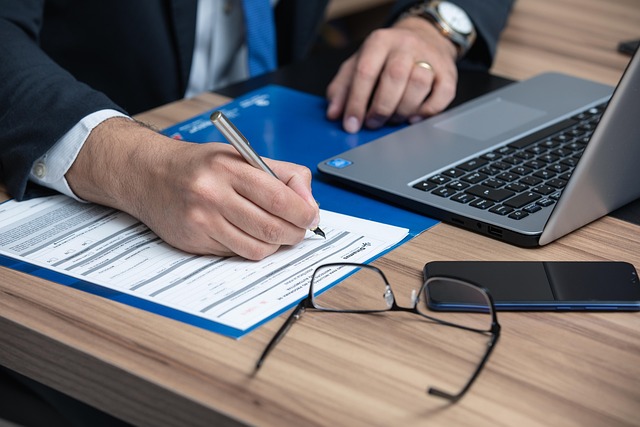Bike Accident Claim: Your Comprehensive Step-by-Step Guide to Compensation

After a bike accident, understanding your rights and navigating the claims process is crucial. Docum…….
In an increasingly active and health-conscious world, cycling has emerged as a popular mode of transportation and recreation. However, with this rise in popularity comes a growing concern for cyclist safety, particularly in the event of accidents. This article delves into the complex realm of bike accident claims, exploring the process, implications, and the global impact on both individuals and society at large. By understanding these dynamics, cyclists, advocates, and policymakers can navigate the system more effectively, ensuring better outcomes and fostering a safer cycling environment.
A bike accident claim refers to the legal process through which a cyclist seeks compensation or justice following an injury-causing bicycle collision. It involves a series of steps, from reporting the incident to pursuing legal action, with the ultimate goal of holding responsible parties accountable and ensuring proper reimbursement for damages. This concept has evolved over time, gaining prominence as cycling communities advocate for their rights and seek recognition for the unique challenges they face on the road.
Key Components:
Incident Reporting: The initial step involves documenting the accident by providing a detailed account to local authorities or relevant transportation departments. This report includes crucial information such as dates, times, locations, involved parties, and witness statements.
Medical Attention: Seeking immediate medical care is paramount. Cyclists should document their injuries and receive proper treatment, ensuring they have the necessary documentation for any potential claim.
Evidence Collection: Gathering evidence is vital. This includes taking photos of the accident scene, collecting contact information from witnesses, and documenting any damage to vehicles or property involved in the incident.
Legal Consultation: Consulting with a lawyer specializing in bicycle accident claims is advisable. They can provide guidance tailored to local laws and regulations, helping cyclists understand their rights and options.
The influence of bike accident claims extends far beyond individual incidents, shaping cycling cultures and safety standards worldwide. Here’s a global perspective on this phenomenon:
North America: The United States and Canada have witnessed a surge in bicycle ridership, leading to increased awareness and more stringent cycling laws. Cities like New York and Toronto have implemented robust systems for reporting accidents, with dedicated units within local law enforcement focused on cyclist safety.
Europe: European countries, particularly the Netherlands and Germany, are renowned for their cycle-friendly infrastructure. Amsterdam’s extensive network of bike paths and traffic regulations that prioritize cyclists have led to a culture where bike accident claims are less common due to better prevention measures.
Asia: Cities in Asia, such as Tokyo and Seoul, have seen cycling gain popularity among all age groups. However, the rapid urbanization has also presented challenges, with crowded streets and complex traffic patterns influencing the dynamics of bike accident claims.
Emerging Markets: In countries like Brazil and India, where cycling is a significant mode of transportation, bike accident claims are becoming more common as legal awareness grows. Local advocates are pushing for improved cyclist protection and safer road conditions.
The economic implications of bike accident claims are multifaceted, affecting both individuals and the broader economy.
Technology plays a pivotal role in transforming bike accident claims, offering both preventive measures and efficient claim management tools.
Smart Bikes: Integrated technology in bicycles, such as GPS tracking, sensors, and connected devices, can provide real-time data on rider behavior and environmental conditions. This information can be used to predict potential hazards and improve safety features.
Wearable Devices: Smartwatches and other wearable tech offer cyclists a range of benefits, from activity tracking to fall detection. In the event of an accident, these devices can provide critical data to support claims.
Accident Prediction Software: Advanced algorithms analyze historical data and patterns to identify high-risk areas and times for cycling accidents. This information empowers local authorities to implement targeted safety measures.
Digital Claim Management: Online platforms and mobile apps streamline the process of reporting and managing bike accident claims. These tools allow cyclists to document incidents, connect with legal professionals, and track claim progress digitally.
The legal framework surrounding bike accident claims varies across jurisdictions, influenced by cultural norms, historical precedents, and societal values.
Liability Laws: These laws determine who is responsible for compensating victims in the event of an accident. Some jurisdictions follow strict liability rules, while others require proof of negligence. Understanding these laws is crucial for cyclists and legal professionals alike.
Cyclist Rights: Many countries have enacted legislation to protect cyclist rights, including provisions for safe cycling infrastructure and traffic regulations that prioritize bicycles. These policies directly impact the frequency and outcomes of bike accident claims.
No-Fault Insurance: Some regions mandate no-fault insurance for cyclists, ensuring that victims receive compensation regardless of fault. This system can streamline claim processes but may also influence premium rates.
International Agreements: In cases involving cross-border incidents or international cyclists, agreements like the Vienna Convention on Road Traffic help establish guidelines for liability and claim procedures.
Despite its importance, bike accident claims face several challenges and criticisms that demand attention and strategic solutions.
Underreporting: Many accidents involving cyclists go unreported, making it difficult to assess the true scope of the problem. Encouraging cyclists to report incidents promptly can improve data accuracy and claim outcomes.
Liability Disputes: Determining liability in complex cases can be challenging, especially when multiple parties are involved. Enhancing evidence collection methods and promoting clear traffic regulations can help resolve these disputes more efficiently.
Legal Loopholes: Some legal systems may contain loopholes that benefit certain parties, leading to unfair outcomes for cyclists. Reviewing and updating laws to address these gaps is essential for maintaining public trust in the system.
Lack of Awareness: Many individuals are unaware of their rights and responsibilities regarding bike accident claims. Public awareness campaigns can educate cyclists, empowering them to take appropriate actions after an accident.
Real-world applications of bike accident claims offer valuable insights into effective strategies and best practices. Here are a couple of case studies:
Case 1: Amsterdam’s Cycling Culture and Claims Management
Amsterdam, Netherlands, is renowned for its vibrant cycling culture. The city has implemented an extensive network of bike lanes, traffic signals, and shared spaces, reducing accidents and fostering a sense of safety among cyclists. When accidents do occur, the Dutch system efficiently manages claims through a dedicated unit within the police force. They utilize advanced data analytics to identify high-risk areas and quickly respond to reported incidents, minimizing delays in claim processing.
Lessons Learned:
Case 2: The Impact of No-Fault Insurance in Sweden
Sweden has long been a leader in cycling rights and safety. One of its key policies is mandatory no-fault insurance for cyclists. This system ensures that victims receive compensation regardless of who caused the accident. As a result, Swedes have higher trust in the legal process, leading to better claim outcomes and reduced financial strain on individual cyclists.
Lessons Learned:
The future of bike accident claims holds both opportunities and challenges, shaped by technological advancements, shifting societal values, and evolving legal landscapes.
Emerging Technologies: The integration of autonomous vehicles and smart cities will impact cycling safety. As these technologies mature, they may introduce new considerations for liability and claim management.
Data Analytics and AI: Advanced analytics and artificial intelligence can revolutionize accident prediction, risk assessment, and claim processing. These tools can identify patterns, provide insights, and automate certain tasks, improving efficiency.
Global Standardization: There is a growing push for international standardization of cycling safety standards and bike accident claims procedures. This could lead to more consistent outcomes across borders, making it easier for cyclists to navigate claim processes when traveling.
Community Engagement: Engaging cycling communities in the development of policies and regulations can foster a sense of shared responsibility and improve safety culture.
The concept of bike accident claims is more than just legal procedures; it represents a complex interplay of public safety, personal rights, and societal values. As cycling continues to gain popularity worldwide, understanding and addressing the dynamics of these claims becomes increasingly vital. By navigating the challenges, leveraging technological advancements, and fostering collaboration between cyclists, policymakers, and legal professionals, we can create a safer and more just environment for everyone on the road.
Q: How do I know if my bike accident was worth making a claim?
A: If your injuries are significant, your medical expenses are high, or you believe someone else is at fault, it may be worthwhile to consider a claim. Consulting with a lawyer can help determine the potential value of your case.
Q: Can I make a claim if I didn’t have insurance?
A: Policies vary, but many jurisdictions allow for no-fault insurance or uninsurable situations. It’s essential to review local laws and discuss options with a legal professional.
Q: What documents do I need to support my bike accident claim?
A: Collect and organize all relevant documentation, including medical records, police reports (if filed), photos of the accident scene, witness statements, and any repair or replacement costs.
Q: How long do I have to file a claim after an accident?
A: Timeframes vary by location, but it’s generally advisable to act promptly. Check local laws for specific time limits, as they can range from a few days to several years.
Q: What if the other party refuses to accept liability?
A: In such cases, legal counsel can assist in gathering stronger evidence and negotiating a settlement or presenting your case in court.

After a bike accident, understanding your rights and navigating the claims process is crucial. Docum…….

After a bike accident, immediate steps include seeking medical attention, reporting it to police, an…….

After a bike accident, immediate and thorough documentation is crucial for a successful bike acciden…….

After a minor bike accident, understanding your bike accident claim rights is crucial. Even seemingl…….

After a bike accident, understanding your legal rights is vital for seeking justice and compensation…….

The bike accident claim process involves insurers meticulously reviewing pre-accident circumstances,…….

After a bike accident, understanding your rights is crucial for successfully navigating claims. As a…….

A successful bike accident claim involves understanding local laws, seeking professional legal advic…….

After a bike accident, prioritize safety and seek immediate medical attention. Document injuries, ex…….

A bike accident claim is a legal process where cyclists seek compensation for injuries and losses su…….